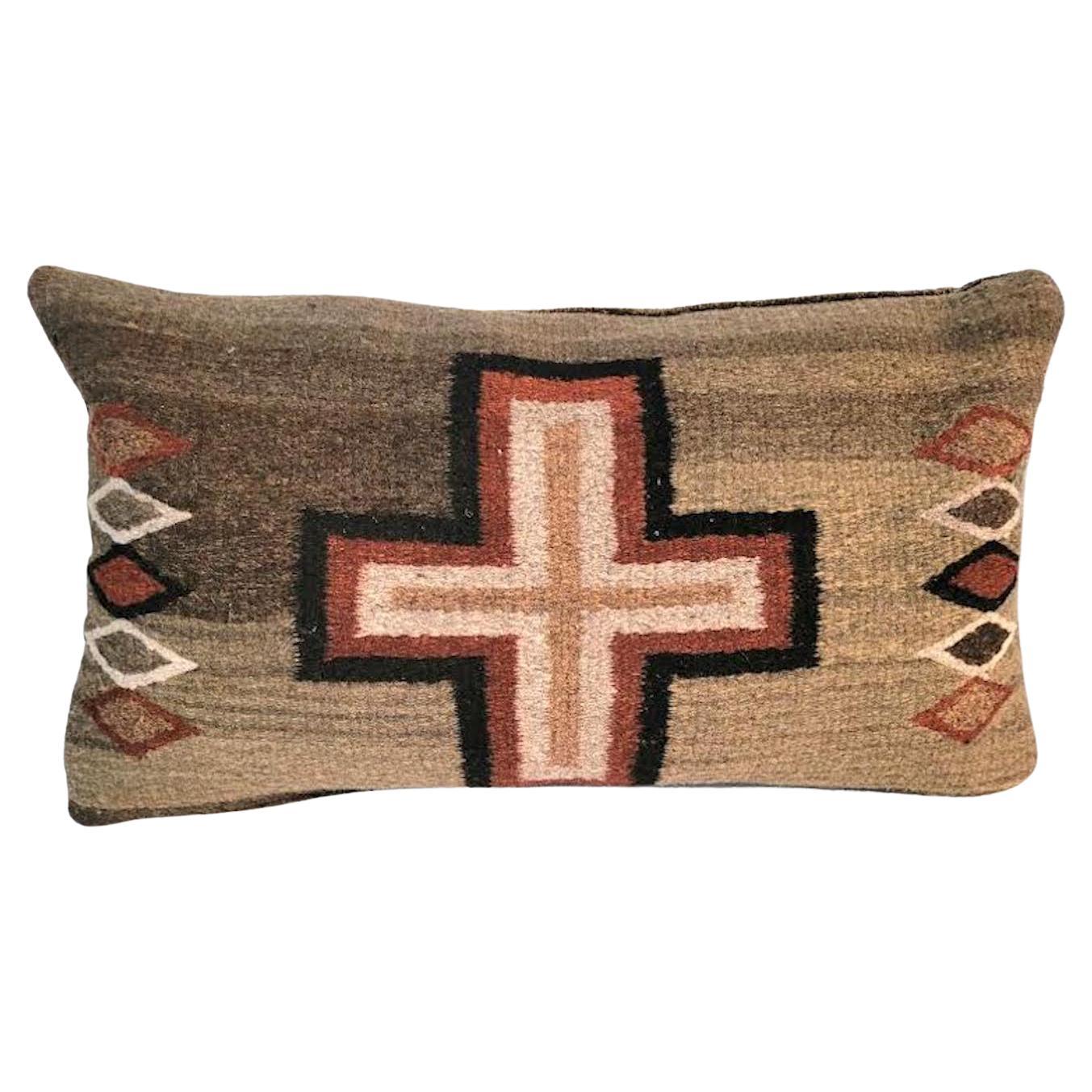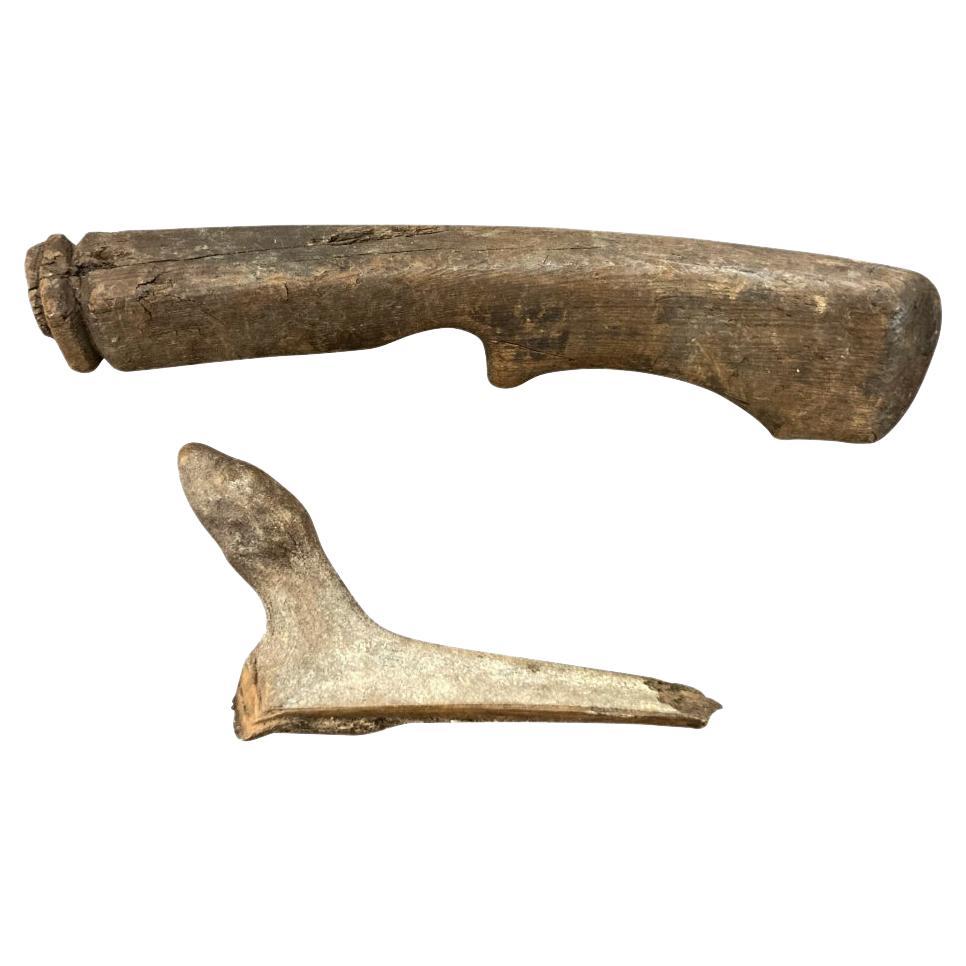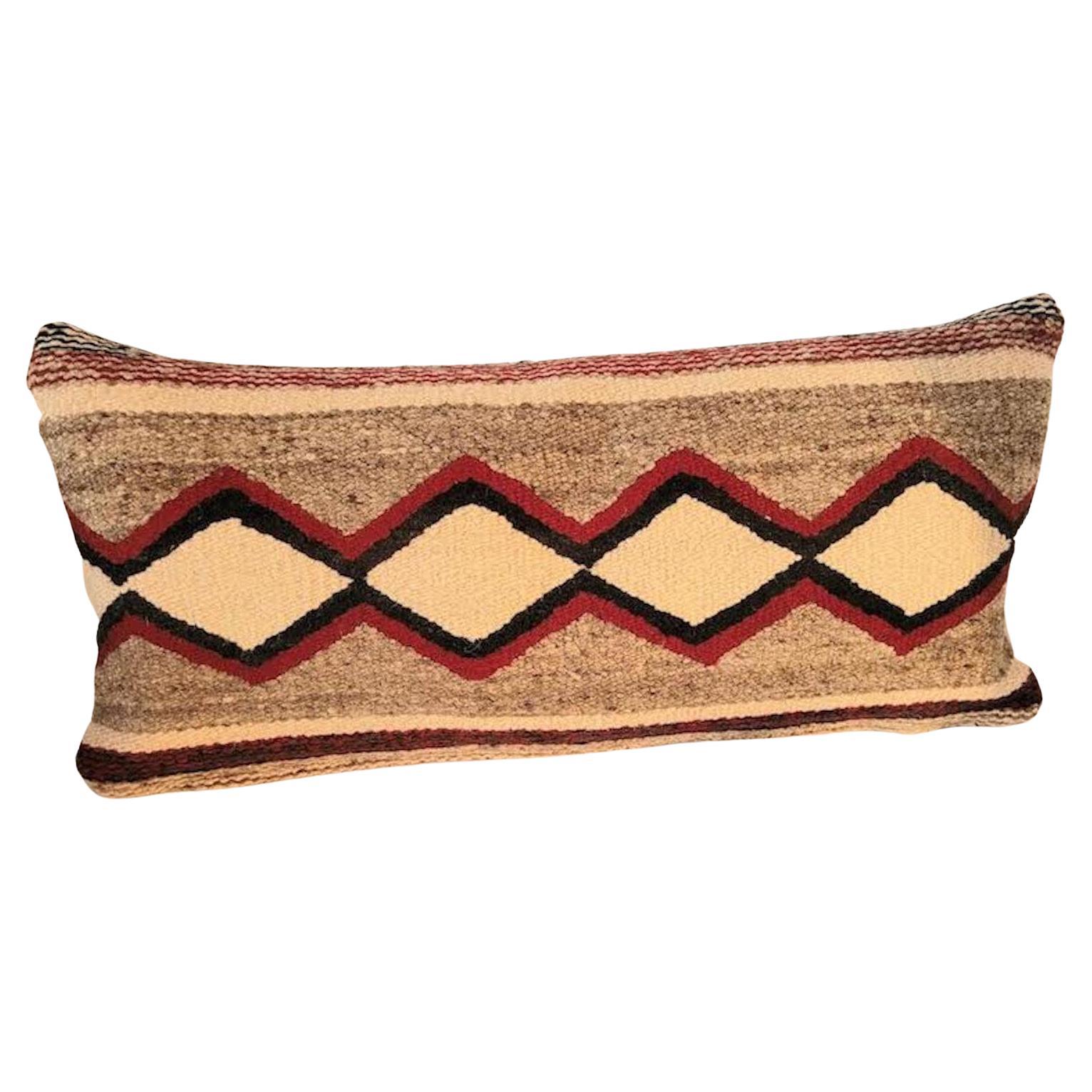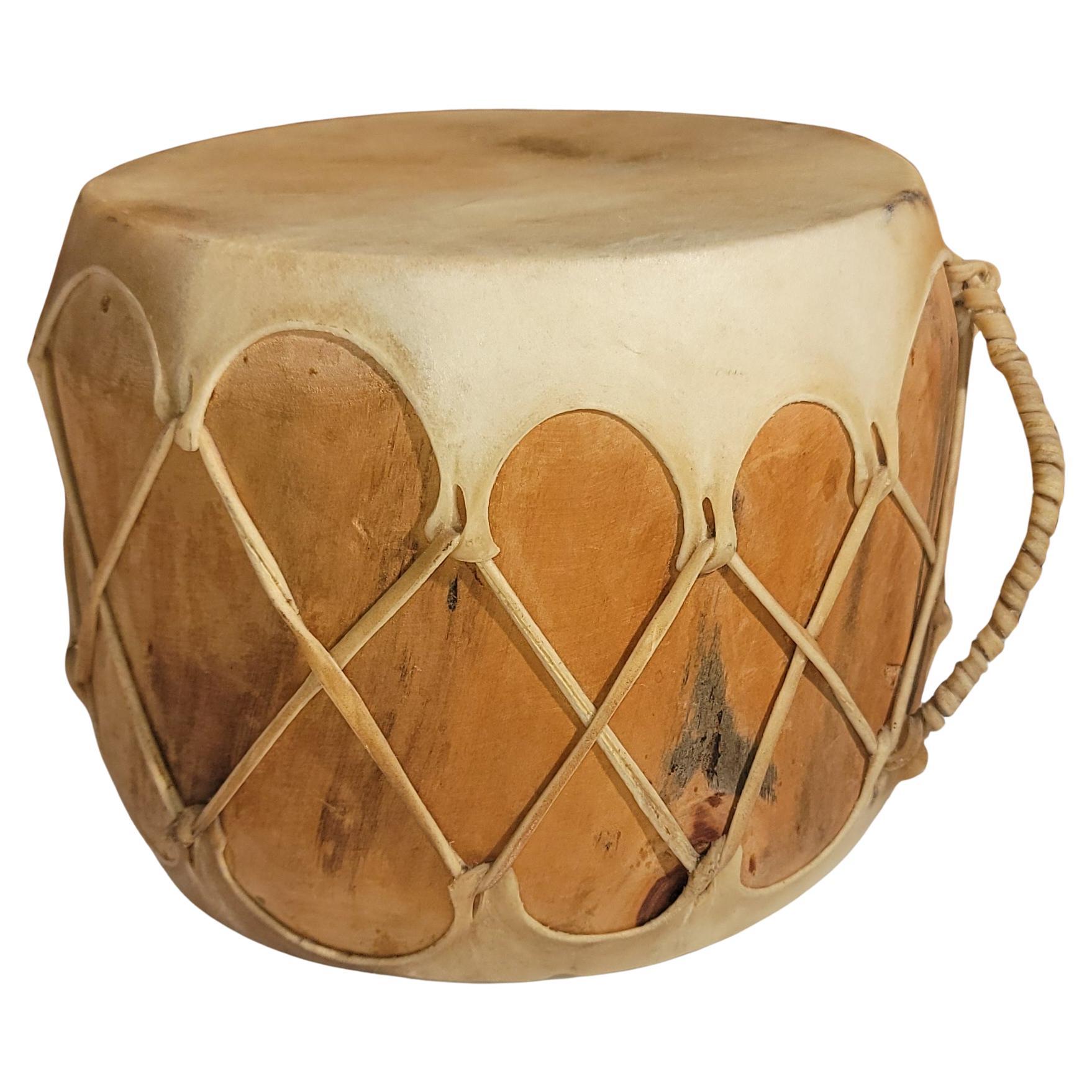Items Similar to Angora Chaps with Beautiful Tooled Leather, Made by John Clark Saddlery
Want more images or videos?
Request additional images or videos from the seller
1 of 7
Angora Chaps with Beautiful Tooled Leather, Made by John Clark Saddlery
About the Item
Wooly, angora chaps with beautifully tooled leather, made by the John Clark saddlery company of Portland, Oregon, signed, circa 1873-1929.
Wooly chaps made of leather and canvas, faced with dyed Angora, made by the John F. Clark Saddlery Company (later John Clark & Son) of Portland, Oregon. The belt portion is beautifully tooled and signed. Founded by John Clark (b. June 1826, Newry, County Down, Ireland, d. June 18th, 1919) in 1873, the firm was to become one of the most prolific makers and operated for 47 years.
Biography of John Clark & His Saddlery John Clark was born 13 June 1826, Newry, County Down, Ireland. His mother was of English origin. He learned the art of harness and saddlery in Liverpool, England at age 17. Afterward, he traveled to London and Paris as a journeyman. He arrived in Portland, Oregon, in 1862, by way of Paris, New York and San Francisco. His first job as a saddler was with pioneer maker, Samuel Sherlock.
Clark opened his own business at 130 Front Street in 1872. He was to become one of Portland’s most prolific saddlers for the next 47 years. His saddles, chaps, cuffs, rolls, bridles, and harness, as well as a line of bits and spurs, were sold locally, regionally and shipped to at least as far as Eastern Montana. In 1879-1880 he employed 8 persons.
In 1871 John Clark married Elizabeth C. Watson. His obituary states that the couple had five children: William T., who worked at the saddlery, Charlotte (Apperson) of Portland, John A. of Seattle, Edward of Los Angeles, and Roy of Portland, (US Army, WWI). Elizabeth died 18 June 1901. John married his second wife, Rachel Shaw, on the 22nd of April, 1906. She was born in Ontario, Canada, on the 16th of November, 1867 and came to Portland with her parents as a child.
The now famous Clark Bucking Roll was claimed to have been invented by John Clark, and patented on May 21st, 1901. This attachment converted the straight fork, or “A” fork saddle into a swell fork saddle that helped keep the rider in place on a rough ride or downhill gallop. Prior to this, a blanket roll or slicker was tied to the forward strings across the inside of the fork, to achieve the same results. Dave Hamley, a saddle maker from Pendleton [1969], credits John Clark with the introduction of bucking rolls. Most saddlers agree that bucking rolls set the pattern for the popular later-day swell fork saddle. Several famous saddlers from Montana claimed to be the true inventor. A long testimonial devoted to the defense of his alleged patent appears in his 1901 catalog.
In 1901, Clark’s letterhead read: “JOHN CLARK & SON, 104-106 Front St” . The header included many of the types of saddlery that they produced as well as the styles of saddle trees available. In 1914, the letterhead read, JOHN CLARK SADDLERY CO. and the byline mentioned that in addition to saddlery, the Clarks were “importers and jobbers of saddlery hardware and leather, robes, trunks, suitcases, bags, gloves, etc.” An engraving of the bucking roll was still prominent on the letterhead.
John Clark passed on then 18the of June, 1919. His obituary noted that he was to donate his land at 4th and Stark in Portland, in order that it may be used for worker housing during WWI. In 1918 John Clark was listed as President, with William F. Clark as Vice President of the firm and William Mann as Secretary. In 1920, William was listed as President, Rachel Clark as V.P., and S.E. Helliwell as Secretary. The Company remained at 104 Front St. in 1923. In this same year, Rachel was listed in the City Directory as residing at the Multnomah Hotel, while William and his wife, Margaret, claimed residence at residing at 1167 Multnomah St. In 1926, the Saddlery was still in business under William T. Clark, but E.L. [Edward?] was listed as V.P.. Not until 1928 does Rachel Clark disappear from the company roster. At this time Clark’s daughter, Charlotte, assumed the role of Secretary. In 1929 the John Clark Saddlery Company was no longer listed in the City Directories, but W.T. Clark was listed as a harness maker.
Rachel Clark died on Feb. 12th, 1933. According to her obituary, published in the Oregonian, she left an estate of $50,000, to be probated. The will was contested by Rachel’s brother, George F. Shaw, as an estate of $100,000, due to the fact that at the time of her death, there were two wills, differing in dispersion with his siblings. There is no mention of any of John Clark and Elizabeth’s sons or daughters. Mounting: The solid walnut frame is of exceptional quality, custom made to size, dovetailed and with wafered corners. The mount was carefully stitched with wire. A deep shadowbox was constructed. The glazing is U.V. protective plexiglass.
Condition: There is some expected wear and loss from obvious use.
- Dimensions:Height: 50.75 in (128.91 cm)Width: 40.5 in (102.87 cm)Depth: 3 in (7.62 cm)
- Materials and Techniques:
- Place of Origin:
- Period:
- Date of Manufacture:1873-1929
- Condition:See Item Description.
- Seller Location:York County, PA
- Reference Number:
About the Seller
5.0
Recognized Seller
These prestigious sellers are industry leaders and represent the highest echelon for item quality and design.
Established in 1991
1stDibs seller since 2008
61 sales on 1stDibs
Typical response time: 9 hours
- ShippingRetrieving quote...Ships From: York County, PA
- Return PolicyThis item cannot be returned.
More From This SellerView All
- Native American Beadwork Gauntlets with an Chief, ca 1880-90Located in York County, PANative American beadwork gauntlets with Indian Chiefs in feathered headdresses, probably souix, Ca 1880-90 Native American beadwork gauntlet...Category
Antique Late 19th Century American Native American Objects
MaterialsLeather
- Civil War Apron, Made In Cambridge, OH by Laura, Hynes, ca 1861Located in York County, PACIVIL WAR PERIOD APRON, MADE IN CAMBRIDGE, OHIO IN 1861 BY 12-YEAR-OLD LAURA HAYNES, WORN BY HER AT BENEFITS FOR THE U.S. SANITARY COMMISSION, PREDECESSOR OF THE RED CROSS, THAT STAFFED, FUNDED, AND MODERNIZED CIVIL WAR HOSPITALS Laura Haynes was born on the 17th of June, 1847 to Vincent and Sarah (Dillon) Haynes of Westland, Ohio (southeast of Columbus and due south of Zanesville). Vincent was listed as a physician in the 1850 U.S. Census, then as a lawyer in 1860, apparently having pursued both fields. It stands to reason that that during the Civil War (1861-1865), the Haynes family, being of means and with Vincent involved in the medical profession, might become involved in philanthropy to benefit Civil War hospitals. Made of plain weave cotton, this patriotic apron features 18 white, appliquéd, hand-sewn stars on a blue ground, cinched at the waist, with a blue belt incorporated below, followed by 13 vertical stripes, alternating red and white, likewise cinched, so that top and bottom have opposing triangular profiles. Aprons of this period did not generally have a loop or tie that went about the neck, to keep the breast portion up, but were rather pinned in place. All of the construction was accomplished by hand-stitching. One can see in the more crude stitching of the stars, how much more difficult it was to perform appliqué work than it was to hem fabric, especially for a 12-year-old girl. While the count of 18 stars may have had no purpose other than to fill the available space, to create a patriotic display, it may just as likely have been selected to reflect the number of states that were felt to be loyal to the Union at the time. Until July 4th, 1861, there were officially 33 stars on the American national flag. This, less the entire complement of 15 Slave States, would arrive at a count of 18. President Abraham Lincoln urged the nation not to do this, desiring not to give credence to secession, with his goal of keeping the Union together. But there were no flag police and people did as they wished, creating versions of the Stars & Stripes in both the North and the South that removed those the respective maker(s) deemed loyal to the opposition. Although rare, a number of American flags of the Civil War era are known that display 18 stars, likely to reflect the removal of 15 Southern States. In the upper center of the striped portion of the apron is a fraternal ribbon, made of blue satin silk, with a white metal brooch at the top and a gold button with an eagle below. This is decorated with a printed 13 star flag ribbon (applied), and with gilded text that reads: “The Women and Girl Workers of the Civil War; ’61-’65.” Next to this is the membership badge of the Women’s Relief Corp, which served as the women’s auxiliary of the Grand Army of the Republic, the primary organization for Civil War veterans. Below these, a hand-lettered exhibition tag was adhered, that reads as follows: “Made in 1861 at Cambridge Ohio by Laura Haynes; Age 12 Years; and Worn at Benefits for the Sanitary Commission [The Red Cross of 1861-5],” Followed by “Laura H. Green; Hotel St Mark; Oakland Calf.” Along the bottom of the tag is a brief title: “Flag-Apron of 1861-5,” with a circled item number “27.” The Sanitary Commission was founded in the Spring of 1861 by private citizens in New York City, who were appalled by the Army’s lack of medical supplies and sanitary conditions in the care of Civil War soldiers. Officially sanctioned by the War Department on June 9th of that year, and approved by Abraham Lincoln on June 13th, the chief planner and organizer was Boston-born writer and Harvard-educated clergyman, Henry Whitney Bellows of New York (b. 1814, d. 1882). Bellows modeled the organization after the work of Florence Nightingale in the British Sanitary Commission of the 1850’s, and brought with him a force of volunteers belonging to an organization he led called the Woman’s Central Association of Relief of New York. In 1863, Bellows would become one of the four founders of the Union League Club of New York, with fellow Sanitary Commission leaders Frederick Law Olmsted (the designer of Central Park, considered to be the father of modern landscape architecture,) plus George Templeton Strong (American composer, painter, lawyer, and prolific diarist), and Oliver Wolcott Gibbs (Harvard professor, chemist, and physician). The goal of the Union League Club was to join like-minded and influential, moneyed men with the cause of both the Commission and the Union in general. In 1881, Sanitary Commission nurse Clara Barton would carry the torch forward, expanding upon the concept to form the Red Cross. Sanitary Fairs—large, fundraising events held to benefit the Commission—were held in New York, Philadelphia, Baltimore, Chicago, St. Louis, and elsewhere. The Northern Ohio Sanitary Fair was almost certainly attended by Laura Haynes, 16 years old by that time, who is likely to have worn the apron there. Held in Cleveland from Feb. 22nd – Mar. 10th, 1864, the fair was opened by Major General James Garfield, future President of the United States, who, it is said, was extremely well received. About 3 years later, on June 11th, 1868, Laura married Robert M. Green of Cambridge, Ohio (northeast of Westland), who shared her June 17th birthday. Born 2 years prior to Laura, in 1846, Robert enlisted as a Corporal with “A” company of the 85th Ohio Infantry, a 3-month unit, on May 27th, 1862. Mustering in on June 10th, I Columbus, at Camp Chase, the 85th was assigned to guard Confederate prisoners at the garrison. He mustered out on the 23rd of September. By 1880, Robert & Laura Green had relocated to Oroville, California (Butte County...Category
Antique 1860s American Political and Patriotic Memorabilia
MaterialsCotton
- 13 Hand-Embordered Stars Made by Great-Granddaughter of Betsy Ross, Sarah WilsonLocated in York County, PA13 HAND-EMBROIDERED STARS AND EXPERTLY HAND-SEWN STRIPES ON AN ANTIQUE AMERICAN FLAG MADE IN PHILADELPHIA BY SARAH M. WILSON, GREAT-GRANDDAUGHTER OF BETSY ROSS, SIGNED & DATED 1911: ...Category
Vintage 1910s American Political and Patriotic Memorabilia
MaterialsSilk
- 13 Star, Betsy Ross Pattern Flag, Made by the Annin Company, ca 1955-1965Located in York County, PA13 STARS IN THE BETSY ROSS PATTERN, ON A VINTAGE AMERICAN FLAG, MADE BY THE ANNIN COMPANY OF NEW YORK & NEW JERSEY, circa 1955 - 1965 13 star American national flag, made entirely of cotton by the Annin Company of New York & New Jersey, in the period between approximately 1955-1965. The stars are arranged in the circular wreath pattern most often associated with Betsy Ross. Flags in this design are widely admired, due to the longstanding popularity of the Ross family myth. While many Americans were taught in grammar school that this was what our first flag looked like, there is, unfortunately, no way to substantiate the claim, and no colonial flags...Category
Late 20th Century American Political and Patriotic Memorabilia
MaterialsCotton
- Colorado State Flag, Made of Silk, Ca 1911-1920Located in York County, PACOLORADO STATE FLAG OF EXCEPTIONAL QUALITY, MADE OF SILK, CIRCA 1911-1920’s, EXTRAORDINARILY RARE IN THIS PERIOD AND THE EARLIEST EXAMPLE THAT I HAVE EVER ENCOUNTERED Early state flags are few and far between. While I am asked for them constantly, most states did not actually have official flags until the 20th century. On May 6th, 1911, Colorado became among the last to adopt a design. The project of doing so was spearheaded by the Denver Chapter of the Daughters of the American Revolution. The bill was introduced by Senator W.H. Sharply and adopted by the Eighteenth General Assembly. The artwork was the product of A.C. [Andrew Carlisle] Carson, President of the Ohio Society of Colorado. The meanings behind the elements in the design are as follows: The large letter "C" stands for Colorado and simultaneously for the Centennial State (Colorado entered the Union in 1876, the year in which our nation celebrated its 100th anniversary of independence), as well as the Columbine State (reflecting the state flower). The red color is included due to the fact that the word Colorado translates to scarlet or red in Spanish. The circle represents the sun, while the gold color symbolizes all-the-year sunshine, Colorado’s status as the greatest gold state, and one Columbine color. It was also included so that the Colorado state flag would have one more color than the U.S. flag. The color white reflects Colorado’s status as the greatest silver state, its eternal mountain snow, and one Columbine color. Lastly, the shade of Yale blue symbolizes all-the-year blue sky and one Columbine Color. Members of the D.A.R. were proud to note that this was also their color. Made sometime between the initial year of the adoption of this design and the 1920’s, this particular flag is the earliest Colorado example that I have ever encountered. The blue and white bars, red “C,” and golden circle are a’’ made of silk taffeta. This was a costly fabric, reserved for the best material a flag-maker produced. The flag is constructed in the manner of a battle flag, to be carried on foot. Squarish in its overall profile, silk was the fabric of choice for flags employed in this function, due to the fact that it was light weight, and thus practical for hand-carrying, while simultaneously formal in appearance, appropriate for the sort of ceremonial use that military presentation often demands. The style of the hoist is also typical for field or parade use. Here the fabric was rolled over to form an open sleeve, through which a wooden staff could be inserted. The sleeve is lined on the interior with black cotton. Leather tabs, at the top and bottom, fit over metal posts on the staff, designed to accept them, to fix the flag in its proper position. The bars were pieced and joined with lineal machine stitching. The hoist and fly ends were finished and hemmed by the same method. The devices are double-appliquéd (applied to both sides) with a machine buttonhole / blanket stitch. Though machines that produced buttonholes were, remarkably, available alongside the earliest standard machines, in the 1850’s and 60’s, the use of this sort of stitch in a running format, for appliqué work, remained highly unusual, even as late as the first half of the twentieth century, probably because it used a ton of thread when compared to the zigzag or satin stitch. It could be expected to appear more often in the hands of a maker of very fine flags, that employed embroidery machines and commissioned custom, fancy work of all sorts. Though unsigned—in no way uncommon in early examples, which were seldom signed—that is precisely the sort of firm that produced the Colorado flag...Category
Early 20th Century American Political and Patriotic Memorabilia
MaterialsSilk
- Elongated Pennant Made for the 1912 Presidential Campaign of Roosevelt & JohnsonLocated in York County, PAELONGATED PENNANT MADE FOR THE 1912 PRESIDENTIAL CAMPAIGN OF THEODORE ROOSEVELT & HIRAM JOHNSON, WHEN THEY RAN ON THE INDEPENDENT, BULL MOOSE / PROGRESSIVE PARTY TICKET: Elongated,...Category
Vintage 1910s American Political and Patriotic Memorabilia
MaterialsCotton
You May Also Like
- Beautiful Navajo Weaving Pillow with CrossLocated in Los Angeles, CAFantastic Navajo weaving pillow with cross. Beautiful colors Olive green, forest green, off white, rust, browns, and black. The backing a a textured green velvet. Zippered casing. Fe...Category
20th Century American Native American Native American Objects
MaterialsWool, Down, Feathers
- Two Antique Inuit/ Eskimo Anthropomorphic Tool HandlesLocated in Bridgeport, CTTwo 19th Century or possibly earlier Inuit Tool Handles, one of carved wood and the other of carved bone. The bone handle bears the unmistakable form of an upturned Seal’s head, a fa...Category
Antique 19th Century North American Native American Native American Objects
MaterialsBone, Wood
- Beautiful Geometric Navajo Bolster PillowLocated in Los Angeles, CABeautiful Geometric Navajo Bolster Pillow. Off White, Taupe, Dark Red and Black. Nice Linen Backing. Feather and Down Insert.Category
20th Century North American Navajo Pillows and Throws
MaterialsWool, Down, Feathers
- Beautiful Navajo Eye Dazzler Geometric Bolster PillowLocated in Los Angeles, CABeautiful Navajo Eye Dazzler geometric bolster pillow. This pillow has a nice texture backing and has a zippered casing. Feather and Down Insert.Category
20th Century American Navajo Native American Objects
MaterialsFabric, Down, Feathers
- Pair of Beautiful Early Geometric Navajo PillowsLocated in Los Angeles, CAPair of beautiful early geometric Navajo pillows. Soft colors of ivory, taupe, beige and pink. Down and feather inserts. Zippered casing.Category
20th Century American Adirondack Pillows and Throws
MaterialsWool
- Indian Made Pueblo DrumLocated in Los Angeles, CAThis fun smaller Navajo Indian -Pueblo drum from New Mexico is in fine as found condition.This drum is made from wood and buckskin .Category
Vintage 1930s American Adirondack Native American Objects
MaterialsLeather, Wood
Recently Viewed
View AllMore Ways To Browse
Made Beautiful
American Made
American Furniture Company
American Antique Frames
Antique American Frames
American Walnut Furniture
American Made Antique Furniture
American Furniture Co
Tooled Leather
18th Century America
Antique American Furniture Set
Custom Made Antique Furniture
18 Century American Furniture
Antique American 18th Century Furniture
Antique Tooled Leather
New American Folk Art
American Frame Late 19th Century
Late 18th Century American





